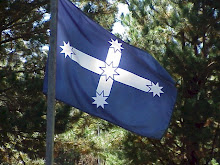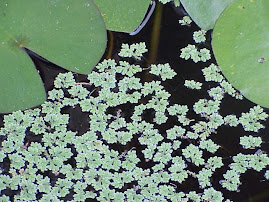
David was recently asked to write an article on our place for the “Jordans Crossing Gazette”, a local newsletter. Here is the item he wrote, that brilliantly explains what the concept of permaculture is all about.
Recently some friends dropped in with a couple of Swedish students who are travelling round Australia volunteering to work on organic farms. They wanted a brief introduction to the ideas of permaculture which they knew related to organic growing. I offered refreshment first and while the kettle boiled we picked leaves from the apple mint and lemon verbena to use to make tea. Fresh from the garden there is no energy wasted in processing and packing and delivering them. While we sat in the shadey garden and sipped our refreshment we could hear the ominous sounds of helicopters dousing the bushfire just five kilometres to the south.
I pointed out various shrubs and trees within view of our seats that were useful for food or other practical permaculture purposes. There were hazelnuts, sour cherries, a medlar, ginko, pecan, carob, grapes, as well as some garden beds producing potatoes, garlic, kale, and some volunteer lettuces. A Persian lilac provides leaves with insecticidal properties similar to a neem tree, which is currently being tested on codling moth. A stand of cherry laurels provide a multiplicity of benefits. It is a fire retardant hedge on the fire side of the house, it creates a cool micro climate, bees appreciate the early flowering for pollen and nectar, and the fruit distracts the birds from eating our fruit.
Nearby is a green walnut tree with nuts I am jealously guarding from the depredations of white cockatoos. It is the centre of a guild of mutually beneficial plants. Walnuts generally inhibit the growth of other plants around them but this one has a wisteria happily winding through its branches and native viola forming a mat around its base. The wisteria is a legume, that is a plant which fixes atmospheric nitrogen, some of which is available in the soil for the walnut, and of course the walnut provides the wisteria with a framework to climb up. The wisteria leaves also help disguise the walnuts from the cockatoos, while the viola provide a groundcover that blocks weeds and grass and prevents water loss from the soil. Our bees also love the viola and wisteria in flower.
A casual walk around the property began with a visit to our young sow whose purpose in the scheme of things is to clear all vegetation in an area prior to planting it out with valued species. She ably illustrates the permaculture principle of using biological resources to do our work for us. The cleared and fertilised areas she makes are planted out in the multilayers of a “forest garden” - a combination of tall, medium and small edible and useful plants and herbs that mimics the structure, diversity and productivity of a natural forest - a hugely productive one.
Then on to the new chookhouse, a makeshift construction of cob walls and recycled materials. Wanting to do my bit for preserving genetic diversity I opted for the heritage breed Welsummers. These are an early 1900s breed developed in Welsum in Holland, a light breed with partridge colouring that produce lovely brown eggs.
A herb spiral growing rosemary, sage, thyme, oregano, curry plant and other culinary herbs shows how we can create and use a range of microclimates and stack many plants in a small area. It was simply made from a mound of earth that provides a drier environment towards the top and a hotter aspect to the north, with the herbs planted on it according to their climate preferences.
As we strolled around we feasted on fresh peaches and windfall plums and discussed the stability and resilience of a permaculture system. Last year strong winds decimated the plum blossoms but the availability diversity meant we still had other fruit to pick eat and preserve. That kind of resilience may be very important in the future as changing climate throws challenges at us.
We passed the Berrarium, a fully enclosed garden area that is protecting raspberries, currants, gooseberries, jostaberries and a range of vegetables from our co-resident wombats, possums, fruit bats and birds. Then on past the Aquaria, bathtubs full of water chestnuts, arrowhead and river bamboo, to the Vegetorium which is a raised garden bed system that uses an easterly microclimate at the back of the glass house. The glasshouse is, of course, an invaluable addition to a cold climate garden enabling the early start of seedlings for the spring planting, as well as keeping some frost tender plants alive through the winter. The nursery uses benches made of recycled materials that keep plants at a height for ease of monitoring. A shadehouse provides shelter for seedlings and cuttings that need some protection as they develop.
On the tour progresses, past a variety of apricots, apples, feijoa, plumcot, lemon, grapefruit, blood orange, pears, calamondin, kiwifruit and figs, many underplanted with herbs like comfrey, yarrow, tansy, lemon balm, catmint, pineapple sage and mints. Reaching the blueberries we scramble under the bird netting and devour handfuls of delicious ripe juicy sweet fruit. Until finally, when all queries were answered and appetites sated with fresh fruit, our visitors departed with a basket of fresh produce and preserves and I trust some understanding of a permaculture system.
Recently some friends dropped in with a couple of Swedish students who are travelling round Australia volunteering to work on organic farms. They wanted a brief introduction to the ideas of permaculture which they knew related to organic growing. I offered refreshment first and while the kettle boiled we picked leaves from the apple mint and lemon verbena to use to make tea. Fresh from the garden there is no energy wasted in processing and packing and delivering them. While we sat in the shadey garden and sipped our refreshment we could hear the ominous sounds of helicopters dousing the bushfire just five kilometres to the south.
I pointed out various shrubs and trees within view of our seats that were useful for food or other practical permaculture purposes. There were hazelnuts, sour cherries, a medlar, ginko, pecan, carob, grapes, as well as some garden beds producing potatoes, garlic, kale, and some volunteer lettuces. A Persian lilac provides leaves with insecticidal properties similar to a neem tree, which is currently being tested on codling moth. A stand of cherry laurels provide a multiplicity of benefits. It is a fire retardant hedge on the fire side of the house, it creates a cool micro climate, bees appreciate the early flowering for pollen and nectar, and the fruit distracts the birds from eating our fruit.
Nearby is a green walnut tree with nuts I am jealously guarding from the depredations of white cockatoos. It is the centre of a guild of mutually beneficial plants. Walnuts generally inhibit the growth of other plants around them but this one has a wisteria happily winding through its branches and native viola forming a mat around its base. The wisteria is a legume, that is a plant which fixes atmospheric nitrogen, some of which is available in the soil for the walnut, and of course the walnut provides the wisteria with a framework to climb up. The wisteria leaves also help disguise the walnuts from the cockatoos, while the viola provide a groundcover that blocks weeds and grass and prevents water loss from the soil. Our bees also love the viola and wisteria in flower.
A casual walk around the property began with a visit to our young sow whose purpose in the scheme of things is to clear all vegetation in an area prior to planting it out with valued species. She ably illustrates the permaculture principle of using biological resources to do our work for us. The cleared and fertilised areas she makes are planted out in the multilayers of a “forest garden” - a combination of tall, medium and small edible and useful plants and herbs that mimics the structure, diversity and productivity of a natural forest - a hugely productive one.
Then on to the new chookhouse, a makeshift construction of cob walls and recycled materials. Wanting to do my bit for preserving genetic diversity I opted for the heritage breed Welsummers. These are an early 1900s breed developed in Welsum in Holland, a light breed with partridge colouring that produce lovely brown eggs.
A herb spiral growing rosemary, sage, thyme, oregano, curry plant and other culinary herbs shows how we can create and use a range of microclimates and stack many plants in a small area. It was simply made from a mound of earth that provides a drier environment towards the top and a hotter aspect to the north, with the herbs planted on it according to their climate preferences.
As we strolled around we feasted on fresh peaches and windfall plums and discussed the stability and resilience of a permaculture system. Last year strong winds decimated the plum blossoms but the availability diversity meant we still had other fruit to pick eat and preserve. That kind of resilience may be very important in the future as changing climate throws challenges at us.
We passed the Berrarium, a fully enclosed garden area that is protecting raspberries, currants, gooseberries, jostaberries and a range of vegetables from our co-resident wombats, possums, fruit bats and birds. Then on past the Aquaria, bathtubs full of water chestnuts, arrowhead and river bamboo, to the Vegetorium which is a raised garden bed system that uses an easterly microclimate at the back of the glass house. The glasshouse is, of course, an invaluable addition to a cold climate garden enabling the early start of seedlings for the spring planting, as well as keeping some frost tender plants alive through the winter. The nursery uses benches made of recycled materials that keep plants at a height for ease of monitoring. A shadehouse provides shelter for seedlings and cuttings that need some protection as they develop.
On the tour progresses, past a variety of apricots, apples, feijoa, plumcot, lemon, grapefruit, blood orange, pears, calamondin, kiwifruit and figs, many underplanted with herbs like comfrey, yarrow, tansy, lemon balm, catmint, pineapple sage and mints. Reaching the blueberries we scramble under the bird netting and devour handfuls of delicious ripe juicy sweet fruit. Until finally, when all queries were answered and appetites sated with fresh fruit, our visitors departed with a basket of fresh produce and preserves and I trust some understanding of a permaculture system.

















No comments:
Post a Comment